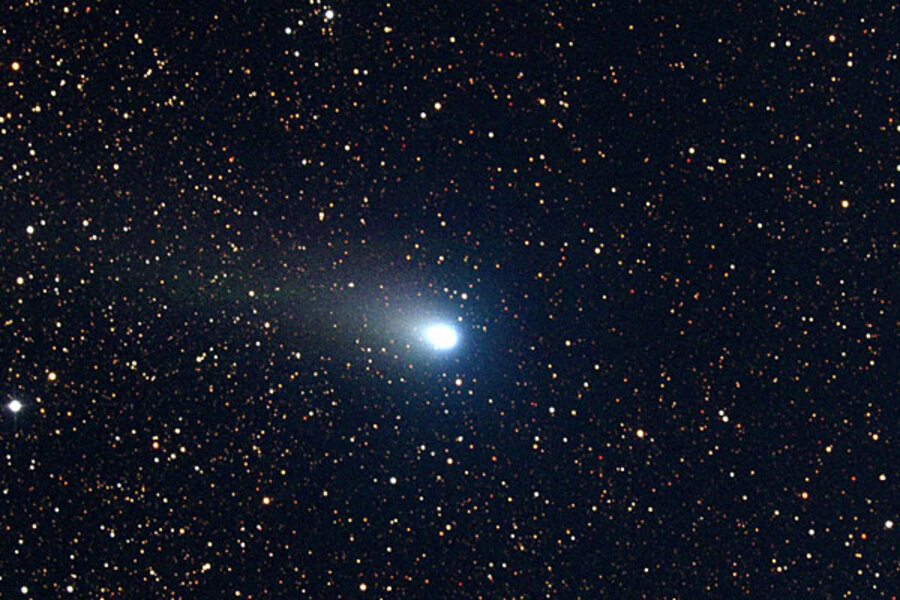Draconids peak tonight: Tips for dragon-watching
Loading...
Everyone knows dragons breathe fire, but who knew their eyes shoot stars?
The Draconid meteor shower gets its name from Draco, the dragon-shaped constellation snaking its way around the Little Dipper. Most of the meteors you'll see tonight will radiate outward from Draco's eyes – the two brightest stars in the constellation, Eltanin and Rastaban.
The Draconids are an annual event, always coming around the 7th or 8th of October. Unlike most meteor showers, the Draconids are best in the evening hours. (Most meteor showers deliver their biggest push near dawn.) Monday night's sliver of a crescent moon will set shortly after sunset, so Monday evening presents optimal viewing potential for the Draconids.
Meteor showers result from the trails left behind by comets. Whenever a comet loops around the sun, it loses gas and solid particles, leaving behind a breadcrumb trail of dust grains. The comet responsible for the Draconids, Giacobini-Zinner, spins past the sun every 6.6 years, so it has traced and re-traced its path through the solar system. When Earth's orbit crosses these overlapping trails of cometary crumbs, the dust grains get caught by Earth's gravity and fall toward the surface, glowing brightly as they burn up in our atmosphere. That flaming destruction creates the brilliant path that the ancients called shooting stars, and which scientists call meteors.
In 2011, the Draconids made an unusually good showing, with an official count of more than 300 meteors per hour – more than 5 per minute. Of course, that year, Comet Giacobini-Zinner was at its closest approach to the sun, which is always good news for meteor showers. In fact, during the comet's perihelion (closest-approach) years, the Draconids produced two of the most spectacular meteor storms of the last century, in 1933 and 1946.
This year, the comet is heading back toward the Oort Cloud, so the show probably won't be as dramatic, though the moonless sky means that it'll be easier to spot whatever is up there. The Draconids are unusually slow for meteors, so even if this year doesn't have as many meteors flying, you'll probably spot them before they flare out.
Meteor spotting is best when the radiant – the apparent center of the meteor shower, which tonight is Draco's eyes – is above the horizon. Since Draco the dragon hangs out near the North Star, no one in the Northern Hemisphere needs to worry about losing the radiant tonight.
To find them, lie back on a reclining chair or just spread a towel on the grass. Give your eyes a few minutes to adjust – the longer you're outside, away from bright lights, the more you'll be able to see. The constellation Draco is just west of the North Star, so make sure you're looking north.
If you want to contribute to the official count, take note of how many stars you can see, what time it is, and keep count of how many meteors you spot. You can send your results to NASA, though the usual meteor team is currently on furlough, or send them to the International Meteor Organization.







